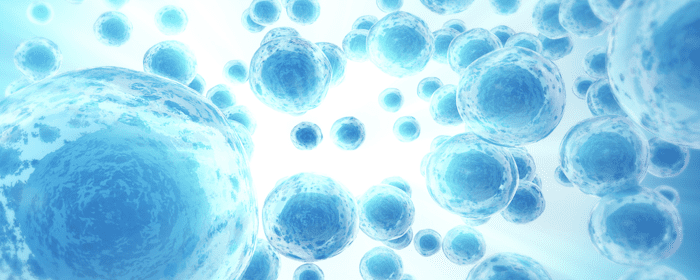Ischemic kidney diseases are serious health issues that lead to irreversible loss of kidney function and are commonly associated with high rates of mortality and morbidity. Many of the conditions captured under the term ischemic kidney disease occur as a result of decreased glomerular filtration rate (GFR) caused by vasoconstriction or loss of autoregulation. Ischemic kidney disease, or ischemic renal disease, is a contributing factor anywhere between 6% – 27% of end-stage kidney disease and is most common among patients 50 years old or older.
The progression of these types of kidney diseases is often multifaceted and involves complex hormonal-immunological cellular interactions. Since ischemic kidney disease often involves damage that occurs to many different types of cells, the conditions have often been demonstrated to be resistant to conventional therapy.
Considering mesenchymal stem cells (MSCs) provide renal protection, their anti-inflammatory and immunomodulatory properties are of interest in an effort to better understand how they can be therapeutically used to treat and prevent acute kidney ischemia (AKI).
In this review, Zhu et al. examine recent progress in the use of MSC to prevent kidney diseases, with a specific focus on chronic ischemic kidney disease (CIKD).
When used to treat CIKD, MSCs have been found to achieve renal cellular repair in a number of different ways. Initially, and upon infusion, MSCs home to the injury site and release homing receptors, growth factors, and anti-inflammatory cytokines to the injury site. They also release similar microparticles that promote kidney repair through internalization in other cells, allowing for reduced intrarenal inflammation and the promotion of vascular regeneration.
Examining the results of clinical trials exploring the use of MSC to treat CIKD, and considering patients with diabetes mellitus often develop chronic kidney issues, including diabetic nephropathy (DN), the authors believe the beneficial application of the anti-inflammatory, antioxidant, and immunomodulating features of MSC could help in the treatment of DN.
While Zhu et al. highlights the potential of MSCs in the treatment of CIKD in this review, they also identify potential limitations, including the potential for MSCs to form teratoma or other tumors (to date, no direct evidence of kidney tumor formation has been reported) and exactly how long the effects of MSC on kidney protection will last. As a way to address both potential limitations, the authors recommend longer follow-up times to ensure all potential detrimental effects of MSC use in humans are known and accounted for.
The review concludes that while further studies are needed to discern the chief elements of their actions and to define the optimal type (tissue source, preconditioning), dose, and delivery route, MSCs demonstrate remarkable potential for future treatment of ischemic kidney disease.
Source: “Concise Review: Mesenchymal Stem Cell Treatment for Ischemic ….” https://www.ncbi.nlm.nih.gov/pmc/articles/PMC3795813/.


 St. Petersburg, Florida
St. Petersburg, Florida
